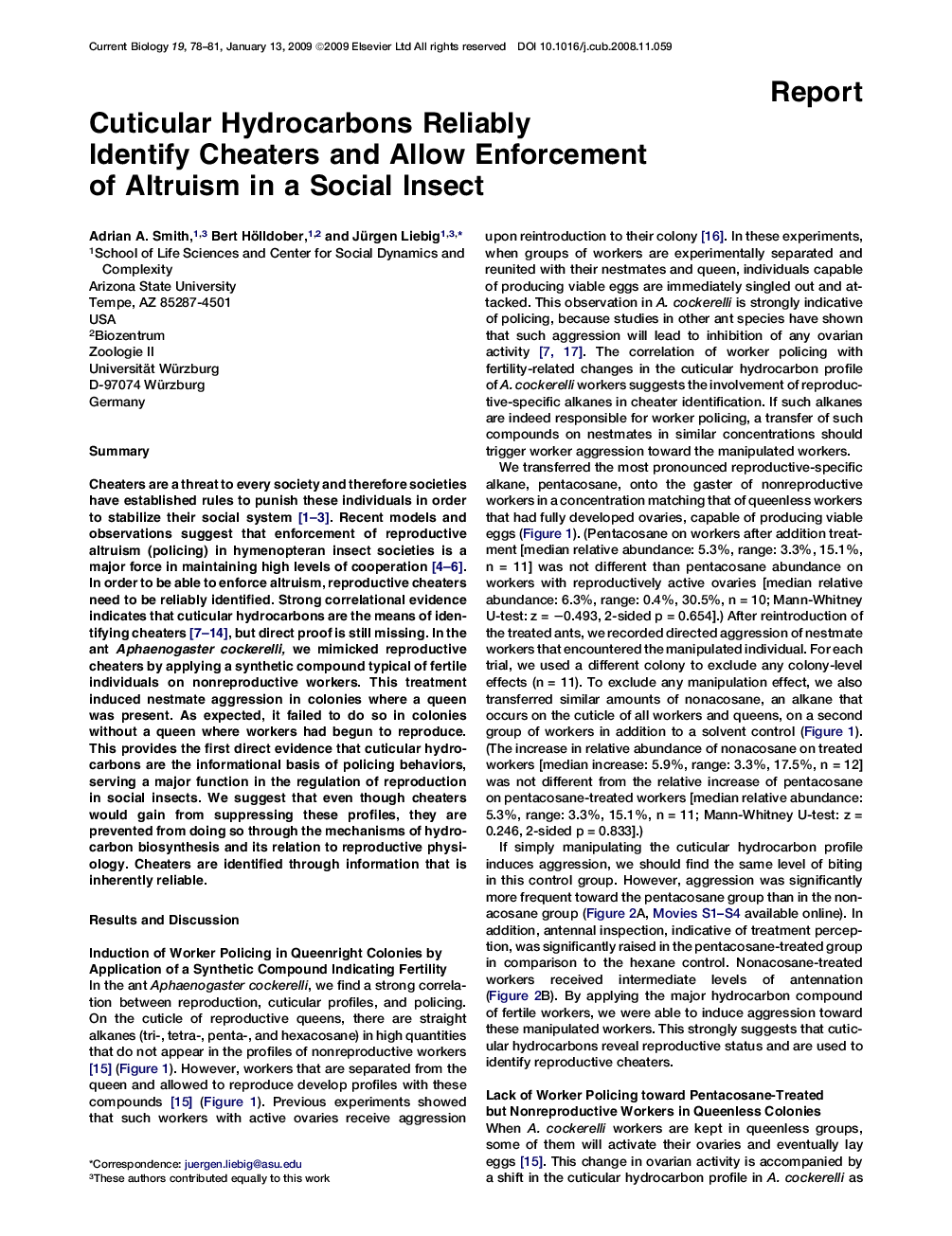| کد مقاله | کد نشریه | سال انتشار | مقاله انگلیسی | نسخه تمام متن |
|---|---|---|---|---|
| 2043664 | 1073372 | 2009 | 4 صفحه PDF | دانلود رایگان |

SummaryCheaters are a threat to every society and therefore societies have established rules to punish these individuals in order to stabilize their social system 1, 2 and 3. Recent models and observations suggest that enforcement of reproductive altruism (policing) in hymenopteran insect societies is a major force in maintaining high levels of cooperation 4, 5 and 6. In order to be able to enforce altruism, reproductive cheaters need to be reliably identified. Strong correlational evidence indicates that cuticular hydrocarbons are the means of identifying cheaters 7, 8, 9, 10, 11, 12, 13 and 14, but direct proof is still missing. In the ant Aphaenogaster cockerelli, we mimicked reproductive cheaters by applying a synthetic compound typical of fertile individuals on nonreproductive workers. This treatment induced nestmate aggression in colonies where a queen was present. As expected, it failed to do so in colonies without a queen where workers had begun to reproduce. This provides the first direct evidence that cuticular hydrocarbons are the informational basis of policing behaviors, serving a major function in the regulation of reproduction in social insects. We suggest that even though cheaters would gain from suppressing these profiles, they are prevented from doing so through the mechanisms of hydrocarbon biosynthesis and its relation to reproductive physiology. Cheaters are identified through information that is inherently reliable.
Journal: - Volume 19, Issue 1, 13 January 2009, Pages 78–81